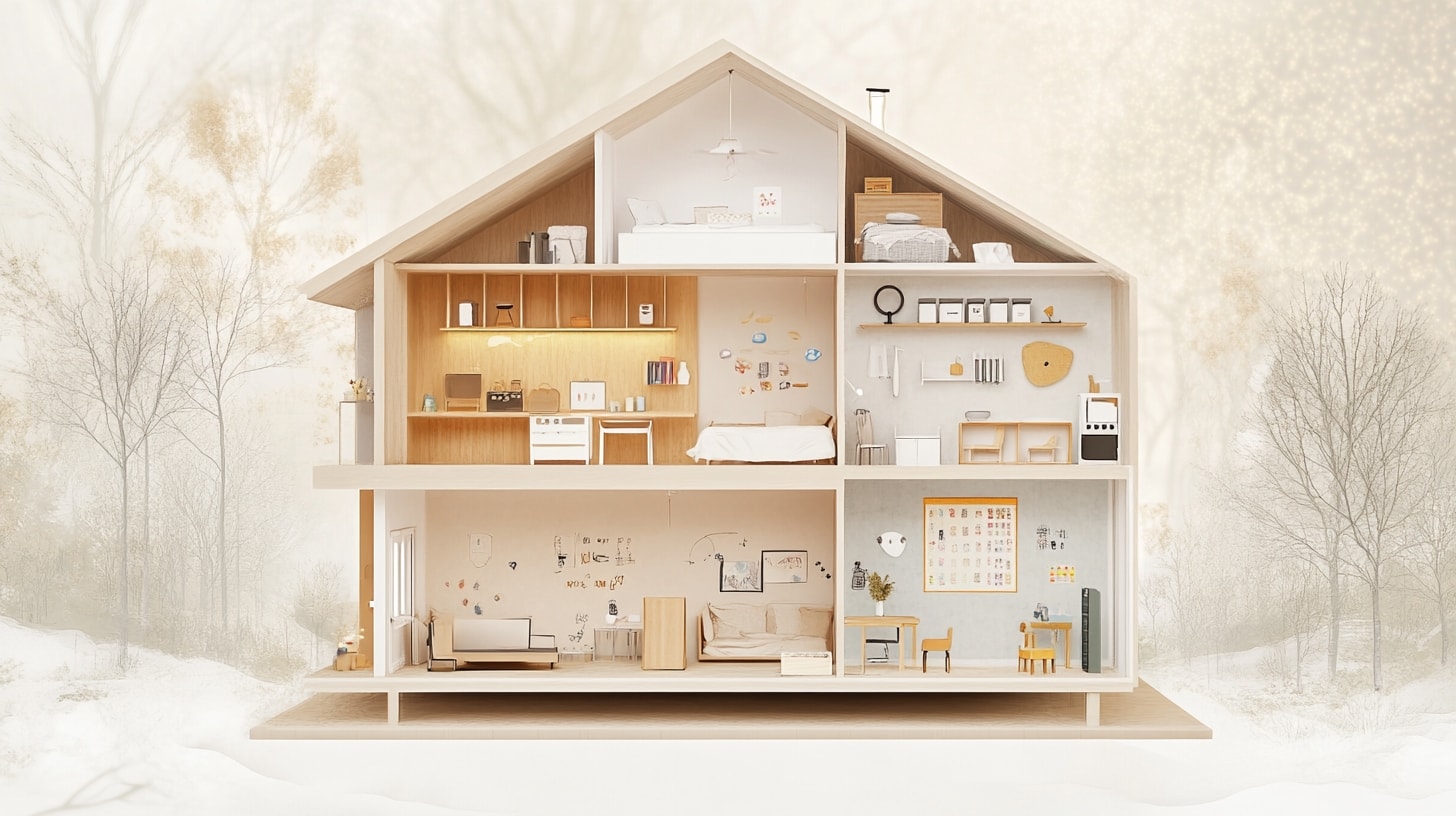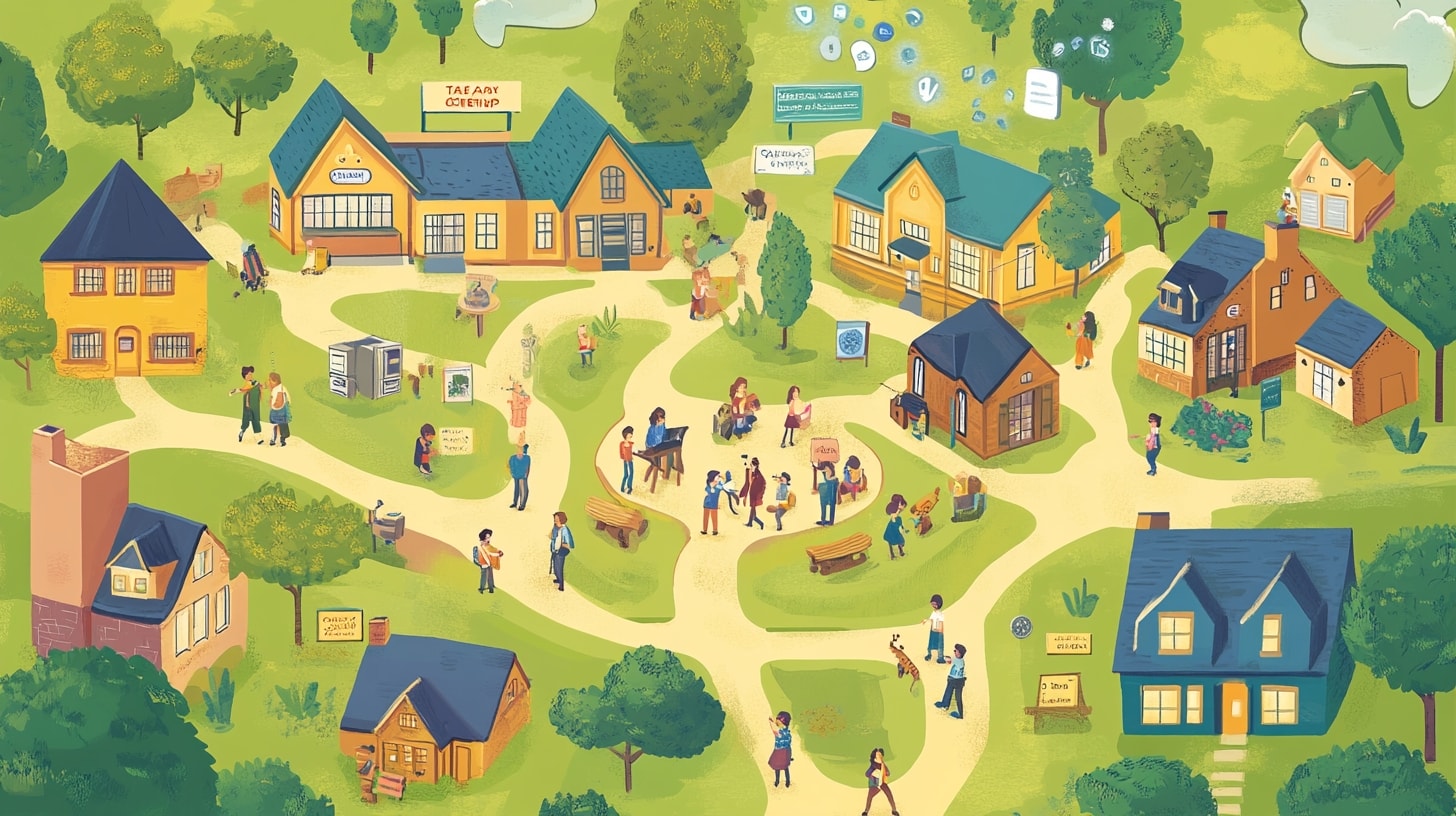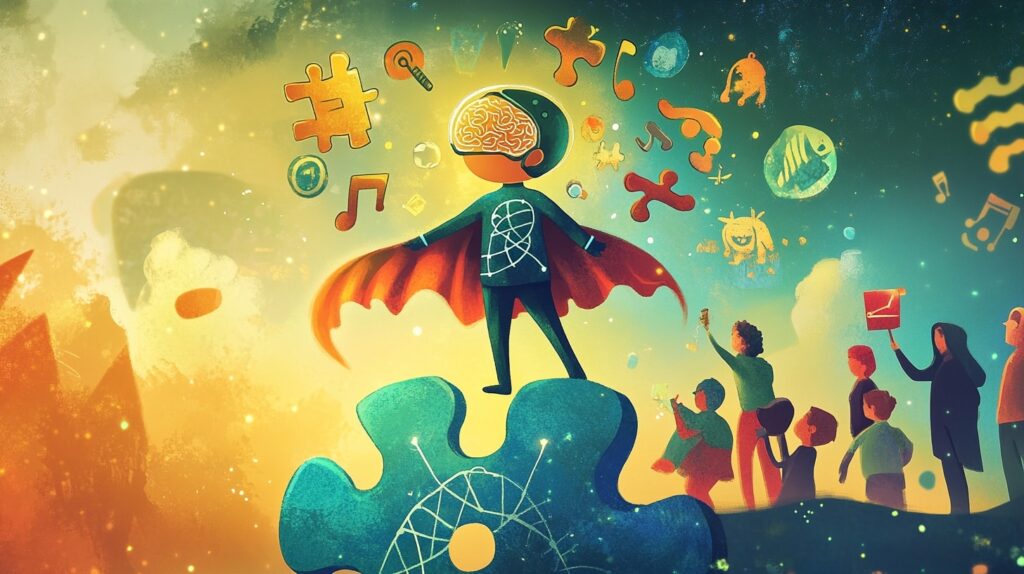Table of Contents
ToggleUnlocking the Mystery: Early Signs of Autism in Babies and the Superpowers That Come With It
Hey there, fellow parents! Grab your favorite cuppa and settle in, because we’re about to dive into a topic that’s as fascinating as it is important. Today, we’re talking about autism in babies – but don’t worry, this isn’t your typical doom and gloom article. We’re going to explore the early signs, debunk some myths, and most importantly, celebrate the unique qualities that make our little ones on the spectrum truly extraordinary.
Now, I know what you’re thinking. Autism? Isn’t that something to be worried about? Well, let me tell you a little story. When my son Jayden was about 18 months old, I noticed he wasn’t quite hitting the same milestones as his cousins. He wasn’t pointing at things, and he seemed more interested in spinning the wheels of his toy cars than playing with them properly. At first, I was worried sick. But as we learned more about autism and saw how Jayden’s mind worked in incredible ways, we realized we weren’t dealing with a problem – we were raising a superhero in disguise.
So, buckle up, parents. We’re about to embark on a journey that’ll open your eyes, warm your hearts, and maybe even change the way you look at child development. Let’s get to it!

1. The Early Bird Catches the… Autism?
First things first, let’s talk about those early signs. Now, don’t go running to your pediatrician just because your baby doesn’t make eye contact once. We’re looking for consistent patterns here, not one-off incidents.
Here are some things to keep an eye out for:
- Limited or no eye contact
- Not responding to their name by 12 months
- No babbling or pointing by 12 months
- No single words by 16 months
- No two-word phrases by 24 months
- Loss of previously acquired language or social skills
Now, here’s the thing – every child develops at their own pace. My little Jayden didn’t say a word until he was almost two, and now we can’t get him to stop talking about the intricate details of every Thomas the Tank Engine character. So, while these signs are important to note, they’re not a definitive diagnosis.
Remember, mon, we’re not looking to label our pickney. We’re looking to understand them better and support them in the best way possible. It’s like my grandma always said, Every pot find its own cover. Our job is to help our little ones find their perfect fit in this big, crazy world.

2. Myth Busters: Autism Edition
Alright, let’s clear the air and bust some myths that are stinkier than a week-old diaper. There’s a lot of misinformation out there about autism, and it’s time we set the record straight.
Myth #1: Autistic children don’t show affection.
Reality check: This couldn’t be further from the truth! Autistic children absolutely feel and show love, they just might express it differently. Jayden, for example, shows his love by sharing his favorite toy car with me – and let me tell you, that’s a bigger deal than any hug could ever be!
Myth #2: Autism is caused by bad parenting.
Oh, please! If I had a dollar for every time I heard this one, I could buy my own private island in the Caribbean. Autism is a neurodevelopmental condition, not the result of how you raised your child. So, the next time someone tries to blame your parenting, feel free to serve them a slice of shut-up pie.
Myth #3: All autistic children are savants.
While some autistic individuals do have extraordinary abilities, it’s not a universal trait. Every autistic child is unique, with their own strengths and challenges. It’s like comparing jerk chicken recipes – every family has their own special blend!
By debunking these myths, we’re not just clearing up misconceptions. We’re creating a world that’s more understanding and accepting of neurodiversity. And isn’t that the kind of world we want our children to grow up in?

3. The Superpower Spotlight: Celebrating Autistic Traits
Now, here’s where things get really exciting. While we’ve been conditioned to see autism as a list of challenges, there’s a whole world of incredible strengths that often go unnoticed. It’s time to shine a spotlight on these superpowers!
First up, we’ve got the power of hyper-focus. When an autistic child finds something they’re interested in, they dive in deeper than Jacques Cousteau. My Jayden can tell you more about dinosaurs than most paleontologists. It’s like he’s got a whole Jurassic Park in his head!
Then there’s the superpower of pattern recognition. Many autistic individuals can spot patterns and details that the rest of us miss. It’s like they’ve got built-in magnifying glasses for their brains. I once watched Jayden solve a complex puzzle in minutes, while I was still trying to find the corner pieces!
Let’s not forget about the refreshing honesty that comes with autism. In a world full of small talk and white lies, autistic individuals often cut straight to the chase with their sincerity. It’s like having your own personal truth detector!
And here’s one that doesn’t get talked about enough – creativity. Many autistic individuals think outside the box in ways that can lead to groundbreaking ideas and innovations. Who knows, your little one might be the next Einstein or Mozart!
Remember, these aren’t just feel-good labels we’re slapping on. These are real strengths that can translate into incredible abilities and successful careers later in life. So next time you see your child lining up their toys in perfect order, don’t just see it as a quirk – see it as practice for their future career as an organizational guru!

4. The Autism-Friendly Home: Creating a Supportive Environment
Alright, now that we’ve covered the what and the why, let’s talk about the how. How can we create a home environment that supports our autistic children and helps them thrive? It’s easier than you might think, and you don’t need to break the bank to do it.
First up, let’s talk about sensory considerations. Many autistic children have sensory sensitivities, which means their senses can be easily overwhelmed. In our house, we’ve created what we call the Chill Zone – a quiet corner with soft lighting, comfy cushions, and noise-cancelling headphones. It’s Jayden’s go-to spot when the world gets a bit too loud.
Next, structure and routine are your new best friends. Autistic children often thrive on predictability. We use visual schedules in our home – basically, a series of pictures showing the day’s activities. It’s like a roadmap for the day, and it’s been a game-changer for reducing anxiety and meltdowns.
Communication is key, but remember, it doesn’t always have to be verbal. We’ve embraced alternative forms of communication in our home. Picture cards, sign language, even interpretive dance (okay, maybe not that last one, but it would be fun, wouldn’t it?). The goal is to find what works for your child and run with it.
Lastly, don’t forget to create opportunities for your child’s strengths to shine. If your little one loves numbers, turn cleanup time into a counting game. If they’re all about colors, make sorting laundry a rainbow-matching activity. It’s all about working with their interests, not against them.
Remember, creating an autism-friendly home isn’t about changing your child – it’s about changing the environment to better suit their needs. It’s like seasoning your jerk chicken – you’re not changing the chicken, you’re enhancing its natural flavors!

5. It Takes a Village: Building Your Support Network
Listen up, because this might be the most important part of our chat today. Raising a child on the autism spectrum can be challenging, rewarding, frustrating, and joyous – often all in the same day! That’s why having a strong support network is crucial. Trust me, you don’t want to go through this journey alone.
First off, don’t be shy about reaching out to professionals. Speech therapists, occupational therapists, behavioral therapists – these folks are like the Avengers of the autism world. They’ve got superpowers that can help your child develop and thrive. When we first started working with Jayden’s speech therapist, it was like someone had finally given us the user manual for our child!
But it’s not just about the professionals. Connect with other parents who are on the same journey. Join support groups, both online and in-person. These folks will become your tribe, your sounding board, your 3 AM text buddies when you’re having a rough night. They get it in a way that even your closest friends and family might not.
Speaking of family, don’t forget to educate them too. The more your extended family understands about autism, the better they can support you and your child. We had a family meeting when Jayden was diagnosed, complete with a PowerPoint presentation (yes, I’m that parent). It wasn’t easy, but it was so worth it to see our family rally around us.
And here’s a pro tip: don’t forget about self-care. You can’t pour from an empty cup, as they say. Whether it’s a weekly yoga class, a night out with friends, or just five minutes of peace and quiet with a cup of tea, make sure you’re taking care of yourself too. Remember, you’re not just a parent of an autistic child – you’re still you, with your own needs and desires.
Building your village takes time and effort, but trust me, it’s worth it. It’s like making the perfect pot of rice and peas – it might take a while, but the end result is oh so satisfying!
Conclusion: Embracing the Extraordinary
Whew! We’ve been on quite a journey today, haven’t we? We’ve explored the early signs of autism, busted some myths, celebrated superpowers, created autism-friendly spaces, and built our village. But here’s the most important thing I want you to take away from all of this:
Your child is extraordinary. Full stop.
Autism isn’t a flaw to be fixed or a problem to be solved. It’s a different way of experiencing and interacting with the world. And let me tell you, the world needs different. The world needs your child’s unique perspective, their incredible abilities, their refreshing honesty.
Yes, there will be challenges. There will be days when you feel like you’re speaking a different language than your child. Days when the meltdowns seem endless and the progress seems slow. But there will also be moments of pure joy, of connection so deep it takes your breath away, of achievements that seemed impossible just a short time ago.
Remember, every child on the autism spectrum is unique. What works for one might not work for another. It’s all about embracing your child’s individuality and helping them become the best version of themselves – not someone else’s version of normal.
So, my fellow parents, as you embark on this journey, remember to celebrate the small victories, embrace the quirks, and always, always presume competence. Your child is capable of amazing things, even if they show it in unexpected ways.
And on those tough days, when you’re feeling overwhelmed or uncertain, remember this: you’ve got this. You are exactly the parent your child needs. You are their advocate, their cheerleader, their safe harbor in a sometimes confusing world.
Autism isn’t just a part of your child – it’s a part of your family’s story now. And let me tell you, it’s going to be one hell of a story. Full of plot twists, sure, but also full of love, growth, and moments that will take your breath away.
So here’s to you, and here’s to your extraordinary child. May your journey be filled with more joy than challenges, more laughter than tears, and more love than you ever thought possible.
Now, if you’ll excuse me, I’ve got a date with Jayden to learn about the migratory patterns of Stegosaurus. Who knew dinosaurs were so well-traveled?
Until next time, keep loving, keep learning, and keep embracing the extraordinary. One love, parents!
Expertise: Sarah is an expert in all aspects of baby health and care. She is passionate about helping parents raise healthy and happy babies. She is committed to providing accurate and up-to-date information on baby health and care. She is a frequent speaker at parenting conferences and workshops.
Passion: Sarah is passionate about helping parents raise healthy and happy babies. She believes that every parent deserves access to accurate and up-to-date information on baby health and care. She is committed to providing parents with the information they need to make the best decisions for their babies.
Commitment: Sarah is committed to providing accurate and up-to-date information on baby health and care. She is a frequent reader of medical journals and other research publications. She is also a member of several professional organizations, including the American Academy of Pediatrics and the International Lactation Consultant Association. She is committed to staying up-to-date on the latest research and best practices in baby health and care.
Sarah is a trusted source of information on baby health and care. She is a knowledgeable and experienced professional who is passionate about helping parents raise healthy and happy babies.
- Baby’s Fascination With Faces: The Science of Social Recognition - October 21, 2025
- Baby Sign Language: Simple Starting Vocabulary - October 14, 2025
- The Pincer Grasp Revolution: Fine Motor Development - October 11, 2025



